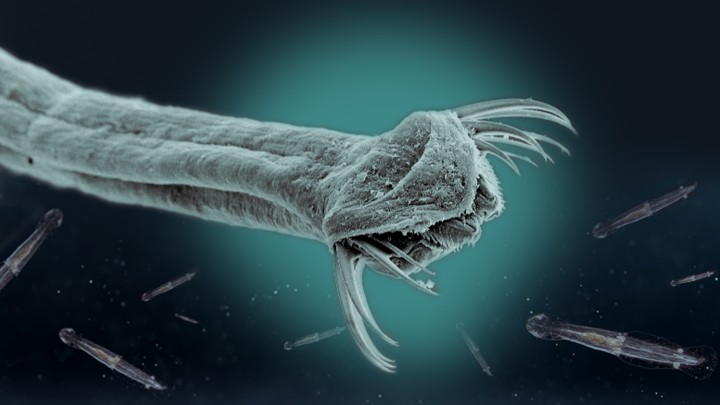Arrow Worm Study Reveals Evolutionary Trends

Chaetognaths, whose name means “bristle-jaw,” can be found all over world, swimming in brackish estuaries, tropical seas and above the deep dark ocean floor. Also known as arrow worms, the creatures have been around since the Cambrian Period, but their precise place in evolutionary history has long eluded scientists. Now, OIST researchers have learned where arrow worms wiggle on the Tree of Life, and their results could reveal important trends in the evolution of bilateral organisms.
The results, published January 10, 2019 in Current Biology, challenge the classical view that complex organisms evolved from simple ancestors by gaining new traits over time. Dr. Ferdinand Marlétaz, Prof. Noriyuki Satoh and Prof. Daniel Rokhsar are the OIST authors on the paper.
Read the full story here.
Media Coverage:














